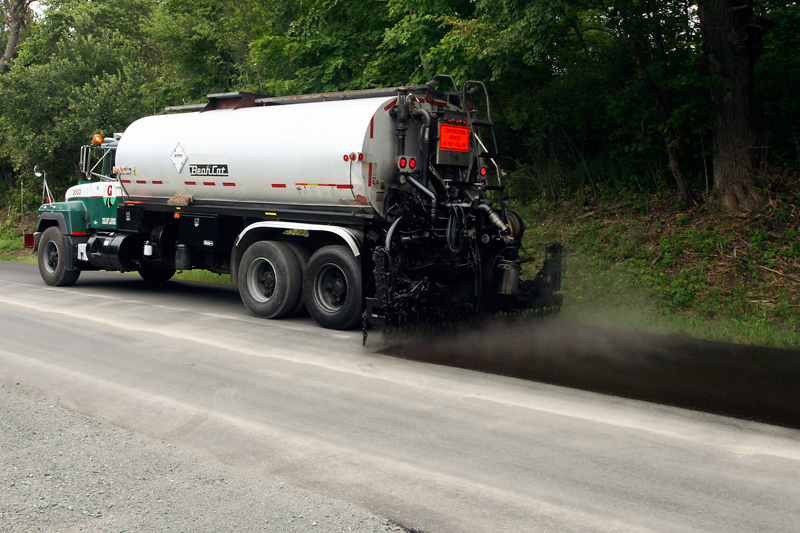Fog Seal

Bitumen Emulsion For Fog Seal
The asphalt surface of the roads can experience erosion, raveling, loss of aggregate,honeycombing, and sulphate attacks over time due to weather conditions such as frost, sunlight, heat, and also road salting, snow removal, as well as the effects of excessive loading and friction, especially caused by tire chains and snowplow blades. Failing to repair and install overlay asphalt in due time will allow damages to expand, leading to complete destruction of the road surface and even the underlying layers. The use of protective layers is recommended to prevent intensification of asphalt wear out, postpone overlay installation, maintain the existing conditions, and fill the cracks.
In addition to providing a suitable road surface, these layers will waterproof it and prevent the destruction of asphalt and its underlying layers. This is a cheap maintenance method that will ensure uninterrupted and secure operation of the roads. Different methods are recommended based on the degree of destruction, the weight and volume of traffic, and type of asphalt. These methods are inexpensive and can be employed early after or even before the beginning of asphalt pavement distress.
Spraying bitumen emulsion without aggregates, aiming to revive asphalt layers. Fog seal can fill small cracks, help seal sand and gravel in the asphalt, and prevent honeycombing. Fog seal can be used in both high-traffic and low-traffic roadways, where depending on the breaking time of the bitumen emulsion, the traffic must be avoided for 2-3 hours. Obviously, fog seal is not recommended for roads that are not cracked or porous.
Tack and fog seal applications are performed using various dilutions of the SS-1h emulsion. This slow setting emulsion is designed and formulated to have long workability time. Diluting SS-1h with water reduces its viscosity and allows for more efficient spraying and penetration.
It is better to apply fog seal during warm weathers, helping the existing water evaporate faster; of course, it can be installed in mild weathers. Its installation in cold weather will require longer periods for the water to evaporate and the emulsion to stick. At the time of installation, the temperature of the bitumen emulsion must be between 50 and 70 degrees Celsius, while the asphalt surface must be at least 10 degrees Celsius. Fog seal is unable to fill long and deep cracks, and these should be patched beforehand. Fog seal can increase the lifespan of asphalt up to four years.
The amount of bitumen used in fog seal is 300 to 1200 grams per square meters, depending on the asphalt condition.
Just paving a CSS or CRS bitumen emulsion layer on the previous asphalt surface.
Fog Seal applications and facts:
- It rejuvenates dry and old asphalt surface.
- It caulks the crevices and fills voids of the asphalt layer.
- It prevents the surface from raveling (usually used for open-graded mixtures).
- It stabilizes shoulders of the road.
- The drier surface of the road is, the later Fog Seal can be applied (once in 6 months up to 1 year).
- The surface which the Fog Seal is going to be applied must have voids and porosities so as to stabilize the bitumen emulsion in it. Moreover, the surface must be clean without dust and oil on it.
- 2 to 3 hours is the time needed for bitumen emulsion to break and traffic must move slowly on it at the first hours.
- Fog Seal’s life time is 2 years and it is very cost effective.

